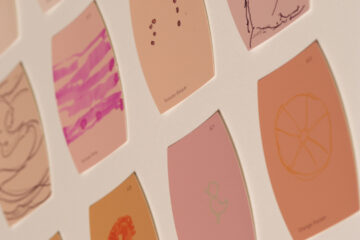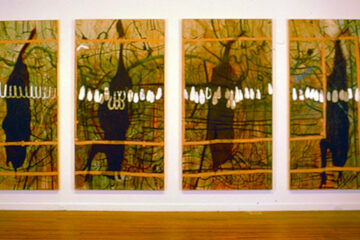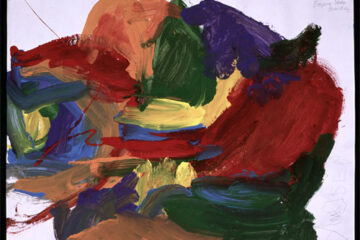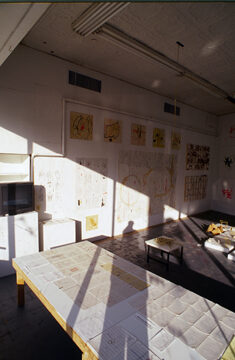
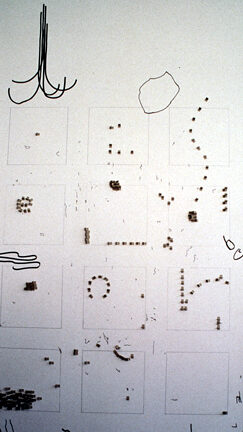
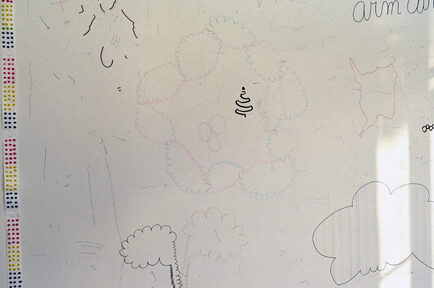


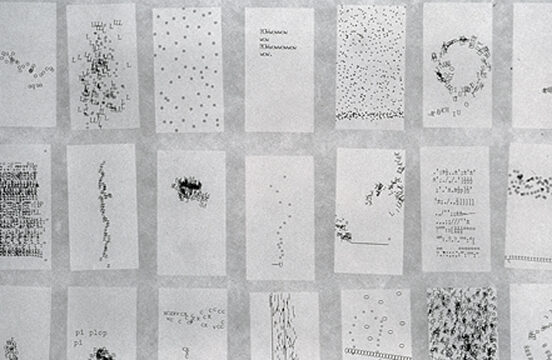



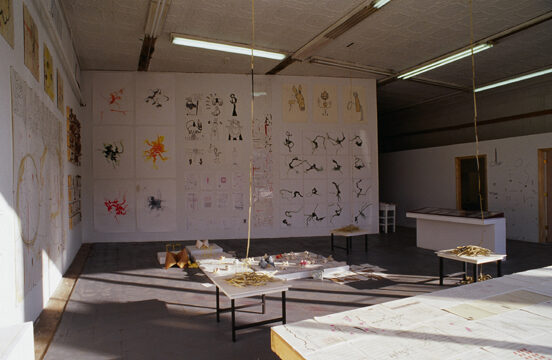
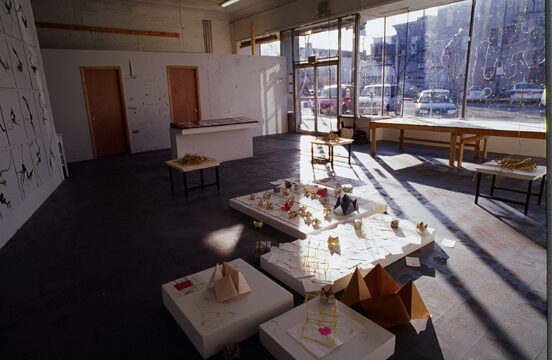


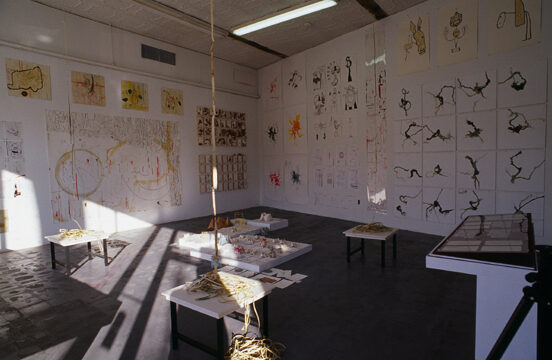

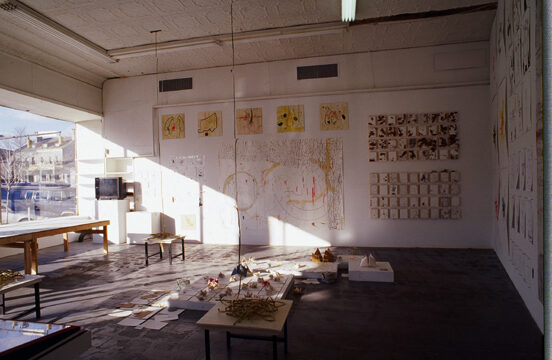
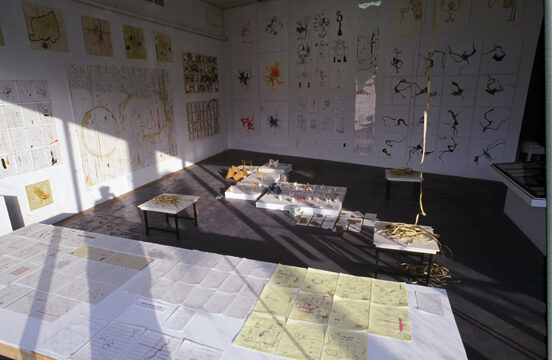
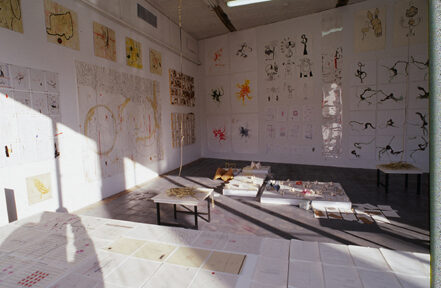
fortissimo to pianissimo • Review
ff f mf mp p pp
fortissimo to pianissimo
Recent Work by Denise Tassin
The sheer volume of work in the current exhibition is an indication of how intricately Denise Tassin’s ongoing processes of drawing become synonymous with the measuring of experience. This is artmaking as a fabric of interpretation, an output that forms the skein of waking hours, with all experiences filtered through the drawing process. The artist favors singular, airy marks and lines, creating a web of movement and space within each drawing. The 200-plus pieces in the exhibit form a dense, harmonious flow from floor to ceiling. To lift out any single drawing for comment is to miss the “read” when left in place; these are works that are marking the passing of time, that are giving a visual aspect to thoughts, music, feelings.
A video documentation within the exhibition, “Drawings By Worms”, reveals a suite of drawings made by the inching progress of nightcrawlers dipped in pigment and placed at the center of large sheets of drawing paper. The handsome results of this procedure are treated as equal components of the other work in the exhibit, and therein lies a clue to the artist’s intentions. An arm, the artist’s, is seen occasionally, dipping or placing a worm. The viewer is reminded that the worm is a tool for drawing, same as brush or pen, valued for the interesting mark and not, say, as a biological study of the worm’s reactions to various colors.
To take the suggestion of omnipotence one step farther the artist next used wind and gravity as drawing tools in the “sticky paintings”. They were made by applying the insect-trap called Stickum Special to identically sized boards, which were set out for a predetermined length of time at two different rural locations to collect whatever fell from the trees or was blown down by the wind. All of the boards are lovely, all are interesting to inspect for the husks and minutiae of the natural world, the signature thinking is in the governing hand of the artist, expressing a desire to comment on all that was in a certain place, to lift it out of context and make it her own.
Finally, the artist remarks on the experience of the installation process by drawing on the site itself. Marks in ink and pigment cover the huge plate glass gallery windows but do not obscure the view in or out. The windows of the space become the most recent drawings in the exhibit, decorative and mysterious from the outside, seen from within they become an overlay of notations that screen the world outside.
Jan Razauskas
fortissimo to pianissimo • Review
Fortissimo to Pianissimo
Recent work by Denise Tassin
Thursday, December 7, 2000
Saturday, January 27, 2001
Fells Point Creative Alliance
413 S. Conkling Street
Baltimore, Maryland 21244
PH: 410-276-1651 or www.creativealliance.org
Line: fat, thin, wavy, curly, textured, straight, sumptuous, compelling. Not since the 1970's wall drawings of Sol LeWitt have I seen an artist embrace line it all its brilliance so fully. Denise Tassin's use of line in this exhibition is remarkable. I am reminded of Jeffery Kastner's review of Sol LeWitt in the December 3, 2000 issue of the New York Times "he works an idea through to a logical conclusion, and then he creates a contradiction that allows for a renewal of the possibility of the idea again". Tassin's work resounds with this enthusiasm. To constantly search and involve herself in new ways to explore the use of line. She makes line on walls, line on glass, line on mylar, line hanging from the ceiling, line in three dimensional form, the twist tie cubes, perhaps even line as a representation of sound.
For years Tassin has been immersed in the work of composer John Cage and his use of ambient sound. Her use of line is the essence of ambient. In this installation you're surrounded by line from all sides -- the walls, the ceiling, and the floor. This is truly an installation, not just work stuck up on the wall, or some kitschy navel gazing crap thrown into a corner and poorly lit. She educates us about what an installation should be.
Tassin's engagement with music is the heart of this installation. It's sound that drives her relationship to line, line that is composed and orchestrated in staccato and syncopated rhythms. Her line is constantly in flux, again suggesting Cage's involvement with chance, the sounds of the street, the sounds of everyday life.
I have often told Tassin to slow down and give the work more time; stop being all over the place. I have never been more wrong.
Patrick Burns
January 2, 2001
